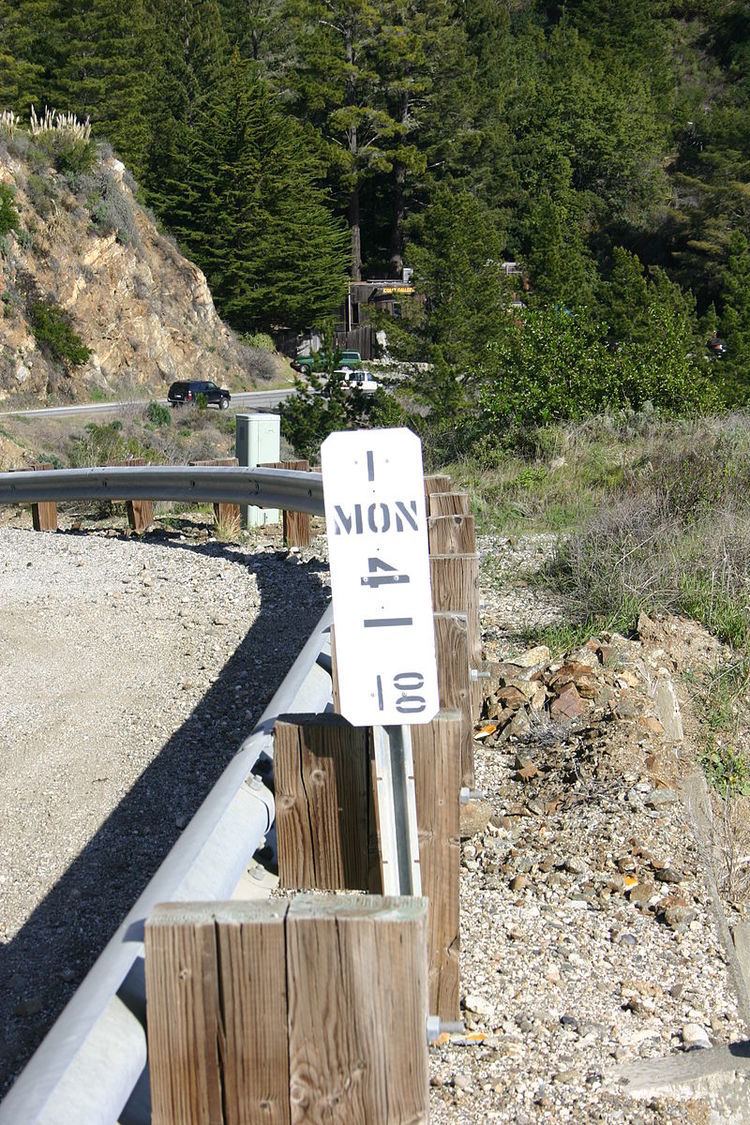 | ||
California uses a postmile highway location marker system on all of its state highways, including U.S. Routes and Interstate Highways. The postmile markers indicate the distance a route travels through individual counties, as opposed to milestones that indicate the distance traveled through a state. The postmile system is the only route reference system used by the California Department of Transportation (Caltrans).
Contents
California was the last state in the country to adopt mile markers, and exit numbers were not implemented until 2002. The state started the Cal-NExUS program in 2002, which would create a uniform exit numbering system for freeways. Included was a pilot program for the placing of mile markers along rural freeways. Currently, three freeway segments are a part of the experimental program: the Route 14 Freeway, the Route 58 Freeway in Kern County, and State Route 180 in Fresno. Caltrans has not decided if the mile marker program will be expanded to all rural freeways. Regardless, Caltrans will still use and maintain the postmile system on all freeways.
Format
A postmile marker is placed along the state highway. Each marker is stenciled with the route, county, and postmile at that location.
Bridge
One of the common formats for postmiles are located on a freeway on bridges over cross streets. According to Caltrans, it displays the name of the bridge, the county and route number, and the postmile. The postmile is often painted onto the piers and/or abutments of bridges and overpasses.
Postmile markers
These are the white metal paddle markers placed at one-mile (1.6 km) intervals, with additional markers placed at significant features along the highway such as bridges and overpasses, junctions, or culverts. The markers are roughly the same size as a standard milepost used elsewhere, but they are white with black text.
Callbox
Postmiles are also shown on callboxes. A blue placard is mounted on each of the state's callboxes, the top of which shows which county the callbox is in, and on the bottom, it shows the 2-letter county abbreviation, along with the route number and the location's postmile (in tenths of miles). Postmiles on callboxes are approximate due to a convention that all callboxes on the northbound or eastbound side of a divided roadway are assigned even numbers while all those on the southbound or westbound side are assigned odd numbers, even though the call boxes are often located directly across from one another.
County prefixes
Alphabetic prefixes on postmile markers and bridges differ from callbox prefixes because the callbox system is maintained by each county, while Caltrans maintains postmile markers and bridge signs. The following table lists postmile and callbox prefixes by county.
Official postmile definitions
Listed in miles, postmile values usually increase from south to north or west to east depending upon the general direction the route follows within the state. The postmile values increase from the beginning of a route within a county to the next county line. The postmile values start over again at each county line.
Enforcement officers, maintenance forces and others use the postmile markers in the field to locate specific incidents or features with reference to the postmile system.
On some stretches of road, the following prefixes may precede the mileage on a postmile marker:
